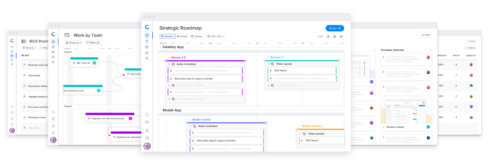
As organizations continue with their digital transformation efforts, cutting-edge software is no longer a luxury. This lack of top-tier software oftentimes leaves product management teams feeling ill equipped to deliver the best possible products. In response to this need, Craft.io was created to provide product managers, product owners, and senior product executives with the tools needed to build strategy and roadmaps, gain customer feedback, and prioritize certain features and tasks while building their products. Elad Simon, co-founder and CEO of Craft.io explained this need for software in more detail and the ways in which Craft.io fills this gap in the technology industry.
“Product management was probably one of the only places left within business functions that didn’t have its own system and it was a very strange situation,” Simon said. “Product managers had basically nothing. They used to be stuck with Excel spreadsheets, PowerPoints, and Word documents… so that was kind of the basic need that we are trying to solve.” According to Simon, Craft.io was created in order to provide product management teams with an all-inclusive platform to help them manage their processes in order to output the best possible products to customers.
Simon went on to explain that the Craft.io platform spans through the entirety of the product development life cycle, offering tools to assist product managers from the inception of a product up until the finalization and distribution of that product. Simon explained, “We take care of the entire product life cycle… starting with stuff like story mapping or an ideation board that we have as a part of the platform.” Simon explained that these early stages in the process are the aspects of the Craft.io platform that function as a jumping-off point for product management teams and leads them to the next step in the process. “After that, we have feedback collection from customers where they basically bring in ideas, thoughts, or requests and from that point you would start doing product definition or basically just defining the building blocks of what is actually being produced,” Simon said.
For defining the product and beginning the build, the platform brings product management teams the Spec Editor. According to Simon, this tool works as an instruction manual for developers to ensure that the specifications of what is being built is correct. Continuing through the process, the next step would be the Prioritization Engine which, according to Simon, functions to help product managers not only do prioritization, but also apply best practices from the market. With this, users gain access to Guru, a layer that Craft.io adds across the entirety of a project in order to provide built-in templates, views, and processes to strategize, prioritize, plan, and gather feedback more effectively.
Following the Prioritization engine, the user would then move to Capacity Planning. “This is a unique module,” Simon said. “Capacity Planning is basically the wish list versus reality.” According to Simon, capacity planning helps product managers measure their expectations and priorities against their ability to actually achieve these goals. From there the user moves into Roadmapping which, according to Simon, is the most exciting part of the product management process. “This is where you actually communicate to all of your stakeholders, be it the senior management, the CIO, the business partners, or the engineers, what it is you are planning to build and when,” Simon said.
Finally, product managers using Craft.io also have access to a feedback loop and then the process restarts in a cyclical manner. “Product development is an ongoing, never-ending process,” he explained. “For example, we’re now using Microsoft Teams, but it’s not like they’ve ended the development of Teams, they’re continuously releasing new features and then getting feedback and updating the platform.”
Providing product managers with a unified space to work independent of different aspects of the organization is another reason why Craft.io was developed. Simon believes that having a separate platform specific to product managers and their teams will allow for them to build a more well-rounded product before the developers gain access to it. This serves to allow product managers the opportunity to think, prioritize, and play around with the idea before anybody else can voice their opinions on the product. Giving product managers a quiet place to round out their ideas will end up saving an organization time in the long run and make for a better final product. Craft.io addresses this problem of needing an isolated environment to work while also offering easy collaboration when the user is ready for it.
According to Simon, there are a few aspects of Craft.io that make it stand out among its competition. One of these is its aforementioned Guru layer. Simon believes what makes the Guru layer special is that “It is embedded throughout the product and allows users to apply and leverage product management best practices in a single click.” He went on to explain the process of using Guru to get the best results. “If a product manager wants to use a specific prioritization method, she can go to Guru Views, select her desired method, and the system will build a dedicated board for that method.”
In addition to this, Simon believes that Craft.io’s user experience also makes the platform stand out among the rest. He said, “One of the topics dearest to our heart is making sure our product balances complexity with ease-of-use. We are an all-in-one system and as such have many tools to help product teams during their various stages of work.” Simon explained that all-in-one tools can oftentimes feel overwhelming and complicated for users and Craft.io feels that that does not have to be the case. “We invest a lot in making sure almost every action is available from any view, that the set up stage of views is as simple as it can possibly be, and that actions by users take as few clicks as possible,” He said.
According to Simon, Craft.io has become even more essential throughout the shift to remote work that we are currently seeing. “We’ve seen a lot of growth with the remote movement because a lot of what product managers used to do in most organizations was based on ‘water cooler conversations’ and this is why the need for a collaborative environment is probably now stronger than ever,” Simon said. Craft.io offers product management teams the ability to have this kind of collaboration again.






